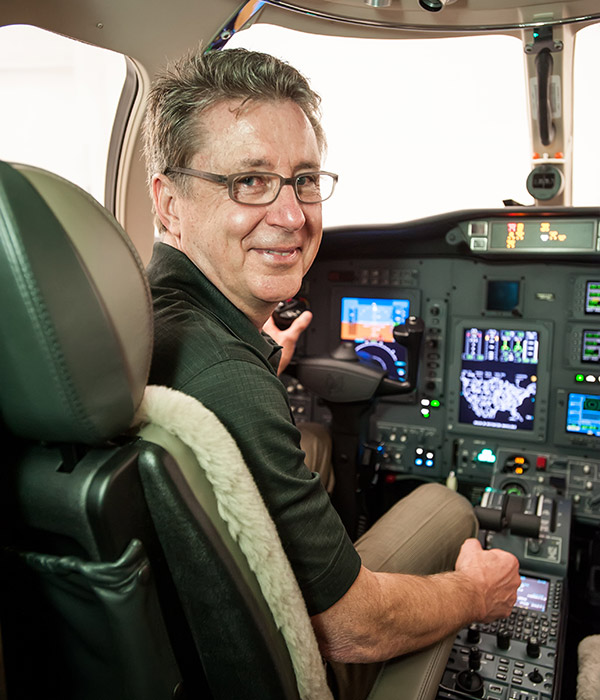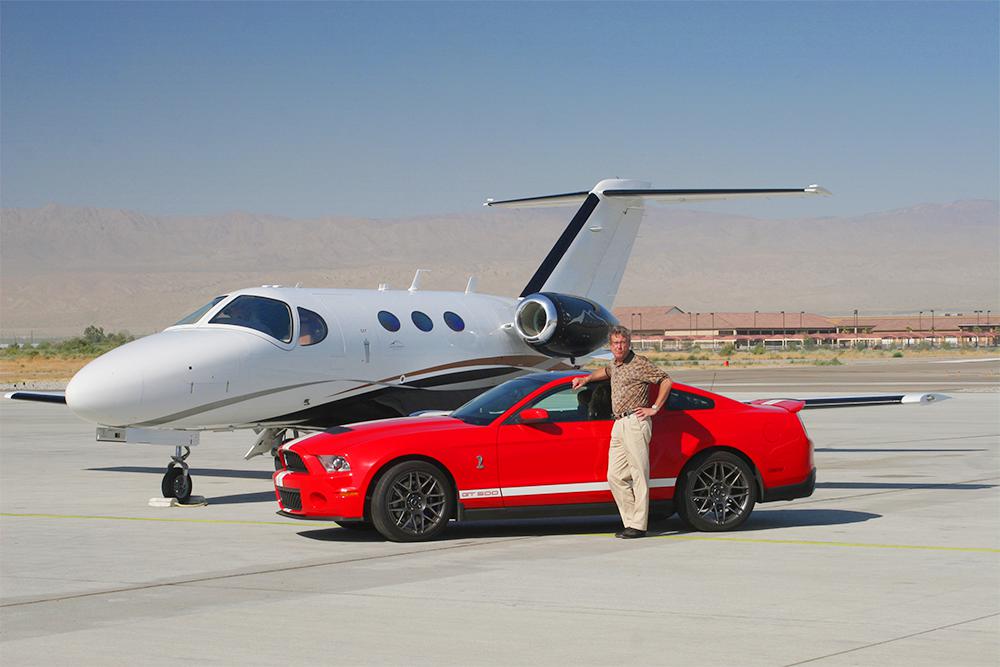The thrill of long-term aircraft ownership
The excitement of earning a private pilot’s license often drives—or in this case, flies—new aviators to add more hours to their logbooks. At some point, many pilots find themselves thinking about going faster, farther and higher.

Ron Boyer has taken delivery of six aircraft in nine years, each time transitioning into a faster aircraft.
That’s exactly what happened to Ron Boyer, who owns and operates several car dealerships in Portland, Oregon, and Denver, Colorado. For Boyer, flying started as a necessity, to easily bridge the long distances from his relaxed, semi-retirement in Palm Desert, California, to his businesses and homes in other states.
“I still visited my dealerships frequently to keep an eye on things, but I hated the commercial flying experience. I had always wanted to learn to fly, so I visited the Palm Springs Flight School in September 2004. After 17 touch-and-gos on my discovery flight, I was hooked,” he said.
Single-engine starter
Boyer took to flying immediately. Even before his second lesson, he purchased a Beechcraft® Bonanza® A36 and a soon-to-be-built Bonanza G36.
“I love new, state-of-the-art anything. I had researched and knew I wanted a glass cockpit, but the airplane I wanted wouldn’t be ready for another 12 months,” said Boyer, who took delivery of his G36 a year later.
“I loved the glass cockpit and the Garmin® equipment, and after only 80 hours of time on my G36, I wanted to go faster, farther and higher without stopping. I decided on a Columbia 400 (later renamed the Cessna® TTx™). It was a G1000, turbocharged, FL250 beauty that cut 1.5 hours off my typical trip.”
Moving to multi-engine
With his Cessna TTx, Boyer traveled a triangle — Denver, Portland, Palm Desert — with legs ranging from 650 to 860 nm. The single-engine, low-wing aircraft let him build time and gain experience. Some pilots decide to stay with single-engine aircraft, because they are comfortable with fewer controls in the cockpit and don’t want to spend the time and money to earn a multi-engine certificate. However, like most single-engine operators, Boyer wanted more.
“The single prop worked, but it wasn’t fast enough, and I had to be extremely cautious of the weather,” he said.
Boyer wanted a Citation Mustang® but was apprehensive of jumping to a jet from his turbo-charged Cessna, so he decided on middle ground.
“I found a 250-hour King Air® C90GTi. The twin-engine turboprop had a Pro Line 21 glass cockpit, was pressurized and approved for flight into known icing. Now I had to learn to fly it,” he said.
Boyer earned his twin-engine rating, then headed to FlightSafety in Wichita, Kansas.
“It was two weeks of great training. I found a knowledgeable instructor and flew with him for 100 hours in the King Air before I soloed it, as required by my insurance company. I put 270 hours on that airplane and got a good knowledge of turbine aircraft,” said Boyer.
Looking back, Boyer said the transition to turboprop isn’t always a necessary one, “I know a lot of pilots wanting to fly jets are intimidated to make the jump and feel they have to make a stop at a turboprop along the way. Not so. It is much easier and fun to fly jets.”
Becoming a jet vet
Ambitious pilots like Boyer dream of flying a jet. They want the power, distance and speed that come with jet propulsion. Even to a turboprop pilot, jets can feel a bit intimidating. Very light jets make a great first step, because they’re often approved for single-pilot operation.
“I always knew I wanted to fly jets and go faster, farther, higher. Here we go again. I must admit I was apprehensive about taking the jump,” said Boyer, who sold his King Air and started researching jets.

Once Boyer took delivery of his first jet, he actually owned two Mustangs—one he kept in his hangar and the other he parked in his garage.
“I always dreamed of flying a Citation Mustang. In 2011, during one of Cessna’s demo tours through Portland, I decided to take a ride. The demo pilot let me sit left seat for the 45-minute flight, and I was totally impressed and amazed. With 500 hours of Garmin® G1000® time from two previous airplanes, I immediately took to the avionics. It was like an automatic transmission. I could just fly the airplane and let FADEC (full authority digital engine control) handle the engines.”
Boyer ended up purchasing a new Cessna Citation Mustang High Sierra Edition. Previous experience with the Garmin G1000 glass cockpit eased the transition into the single-pilot jet.
“The Mustang is such a pilot-friendly aircraft. I could go fast on long trips yet slow down to single-engine aircraft speeds of 85 to 95 KIAS to land. That ‘scary jet thing’ went away real fast,” said Boyer. “I loved my Mustang”.
Boyer’s insurance company required 50 hours with a type-rated pilot. One of Citation’s top demonstration pilots flew the required time with Boyer in just one week.
Boyer loved his Citation Mustang, but it wasn’t long until he wanted even more. Some 250 hours later, he was eyeing Cessna’s newly-announced Citation M2®, a light business jet equipped with Garmin’s G3000 digital integrated flight deck.
“So, I put one on order. As it happens, I have a very good Citation sales rep who called me with an amazing idea. Why not skip over the M2 and get a brand new CJ2+? He was absolutely right. I traded in my beloved Mustang and took delivery of my new 2013 Cessna Citation® CJ2®+,” said Boyer, who attended training in Wichita for a third time.
He now holds two single-pilot type ratings—CE510S and CE525S. Boyer’s logbook also includes more than 1433 hours of total flight time in aircraft and simulators—433 hours in single-engine, 400 hours in turboprops and more than 600 hours in jets.
“Would I do it again? Absolutely. As I became hooked on jets, I realized this would be a long-term thing,” said Boyer.
Videos and stories contained in this site may contain information that while accurate at the time of publication, has since been updated. Please connect with a representative for any questions.